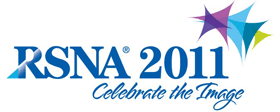
Abstract Archives of the RSNA, 2011
SSA16-08
Perfusion Imaging of Transient Ischemic Attack
Scientific Formal (Paper) Presentations
Presented on November 27, 2011
Presented as part of SSA16: Neuroradiology (Acute Stroke)
Greg Zaharchuk MD, PhD, Presenter: Advisory Board, General Electric Company
Research support, General Electric Company
Jean-Marc Olivot MD, PhD, Abstract Co-Author: Nothing to Disclose
Nancy Jane Fischbein MD, Abstract Co-Author: Nothing to Disclose
Roland Bammer PhD, Abstract Co-Author: Nothing to Disclose
Gregory W. Albers MD, Abstract Co-Author: Nothing to Disclose
Because transient ischemic attack (TIA) can predict future stroke, it is important to distinguish true vascular events from potential non-vascular etiologies. Arterial spin labeling (ASL) imaging is sensitive to mild alterations in cerebral perfusion and arterial arrival time. We hypothesized that ASL abnormalities would be identified frequently in patients with transient symptoms, due to its greater sensitivity to minor perfusion changes, and compared it with bolus contrast perfusion-weighted imaging (PWI) and diffusion-weighted imaging (DWI).
We prospectively acquired DWI and pseudocontinuous ASL (label time/post-label delay 1500/2000 ms) at 1.5T within 48 hrs of symptom onset in patients with suspected TIA. A subset of these patients also received bolus contrast PWI. Hemodynamic maps were created including CBF, CBV, mean transit time (MTT), and normalized time-to-peak of the residue function (Tmax) using delay-insensitive deconvolution. Two separate neuroradiologists evaluated the images to determine the frequency of abnormalities on each imaging sequence, followed by a consensus session. Additionally, quantitative CBF measurements were performed.
85 patients met the inclusion criteria, 54 of whom also underwent PWI. DWI was abnormal in 20/85 (23.5%), while ASL was abnormal in 53/85 (62.4%). Arterial transit artifact in vascular borderzones was seen in 52.9% of patients and was the most common ASL abormality; other abnormalities included focal high or low ASL signal within a vascular territory. Bolus contrast PWI maps were abnormal in 16/54 (29.6%). In almost all cases, the PWI abnormalities were best seen on Tmax maps. Agreement between readers expressed by kappa was 0.70 (95% CI: 0.54-0.86) for ASL, 0.57 (0.34-0.80) for PWI, and 0.90 (0.79-1.00) for DWI.
Perfusion imaging can aid in the diagnosis of TIA. ASL is more sensitive than PWI to detect a vascular abnormality, with the most common abnormality being the borderzone sign (Zaharchuk et al., Radiology 2009). Additionally, neuroradiologists had more agreement on presence of abnormality with ASL than with bolus PWI. These findings suggest that acquiring perfusion imaging in TIA patients may supplement diffusion information and help identify true vascular events.
Early MR perfusion imaging, particularly with ASL, increases the yield of detecting TIA patients whose symptoms are due to vascular disturbances.
Zaharchuk, G,
Olivot, J,
Fischbein, N,
Bammer, R,
Albers, G,
Perfusion Imaging of Transient Ischemic Attack. Radiological Society of North America 2011 Scientific Assembly and Annual Meeting, November 26 - December 2, 2011 ,Chicago IL.
http://archive.rsna.org/2011/11008460.html

